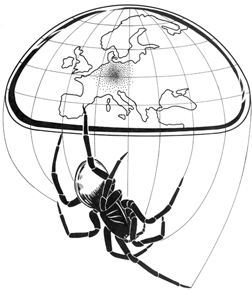Arachnologische Mitteilungen
LISTE ALLER ARTIKEL
Current results of an arachnological survey of some sandstone rock sites in Bohemia (so-called "rock cities")
Araneae; sandstone; rocks; lithobiont; Czech Republic
Abstract
The spider fauna of the Adrspach-Teplice rockswas investigated. Some records on spider fauna of other nine sandstone rock areas are included. The phenomenon of "rock cities" manifests itself in three aspects: (1) In the bottom parts are microclimatically cold spaces, frequently hosting northern ot mountain species of invertebrates, which here have an azonal occurence. (2) the sun exposed tops of rocks can host thermophilous species. (3) Some species are limited to the surface of rocks and boulders. These are referred to as lithophilous or lithobiont species.
Liste der Spinnen Baden-Württembergs (Araneae). Teil 1: Bibliographie und Liste der Linyphiidae, Nesticidae, Theridiidae, Anapidae und Mysmenidae
List of the Spiders of Baden-Württemberg (Germany). Part 1: Bibliography and list of Linyphiidae, Nesticidae, Theridiidae, Anapsidae and Mysmenidae
Araneae; checklist; faunistics; bibliography; Baden-Württemberg; Germany
Abstract
The checklist contains informations about the spiders recorded from Baden-Württemberg since 1895 and includes a bibliography of the spider fauna of Baden-Württemberg.
Stefan Kneitz (1991): Vergleich der Spinnenfauna (Arachnida: Araneae) in unterschiedlich bewirtschafteten Weinbergen in Mainstockheim bei Kitzingen
book review
Abstract
book review: Stefan Kneitz (1991): Vergleich der Spinnenfauna (Arachnida: Araneae) in unterschiedlich bewirtschafteten Weinbergen in Mainstockheim bei Kitzingen


